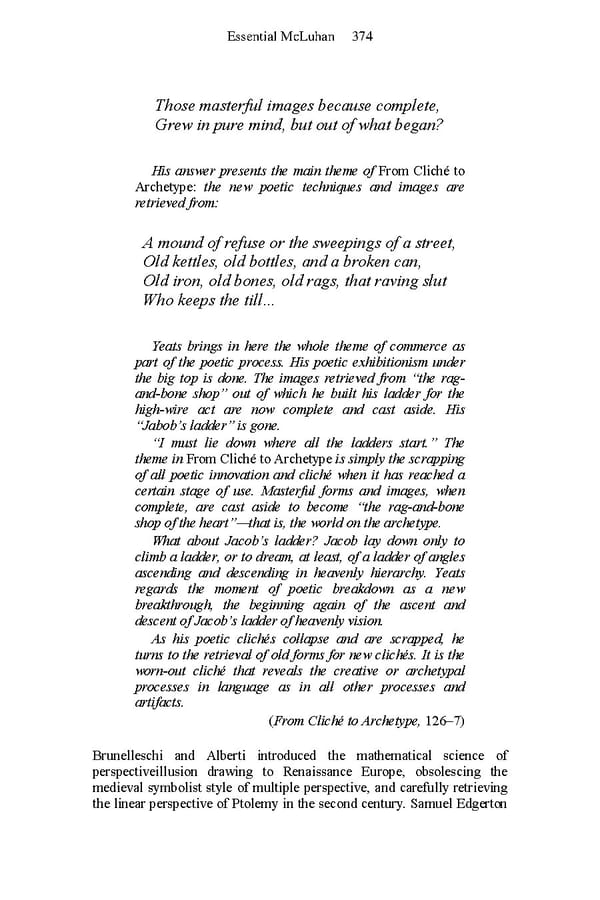Essential McLuhan 374 Those masterful images because complete, Grew in pure mind, but out of what began? His answer presents the main theme of From Cliché to Archetype: the new poetic techniques and images are retrieved from: A mound of refuse or the sweepings of a street, Old kettles, old bottles, and a broken can, Old iron, old bones, old rags, that raving slut Who keeps the till… Yeats brings in here the whole theme of commerce as part of the poetic process. His poetic exhibitionism under the big top is done. The images retrieved from “the rag- and-bone shop” out of which he built his ladder for the high-wire act are now complete and cast aside. His “Jabob’s ladder” is gone. “I must lie down where all the ladders start.” The theme in From Cliché to Archetype is simply the scrapping of all poetic innovation and cliché when it has reached a certain stage of use. Masterful forms and images, when complete, are cast aside to become “the rag-and-bone shop of the heart”—that is, the world on the archetype. What about Jacob’s ladder? Jacob lay down only to climb a ladder, or to dream, at least, of a ladder of angles ascending and descending in heavenly hierarchy. Yeats regards the moment of poetic breakdown as a new breakthrough, the beginning again of the ascent and descent of Jacob’s ladder of heavenly vision. As his poetic clichés collapse and are scrapped, he turns to the retrieval of old forms for new clichés. It is the worn-out cliché that reveals the creative or archetypal processes in language as in all other processes and artifacts. (From Cliché to Archetype, 126–7) Brunelleschi and Alberti introduced the mathematical science of perspectiveillusion drawing to Renaissance Europe, obsolescing the medieval symbolist style of multiple perspective, and carefully retrieving the linear perspective of Ptolemy in the second century. Samuel Edgerton
 Essential McLuhan Page 380 Page 382
Essential McLuhan Page 380 Page 382